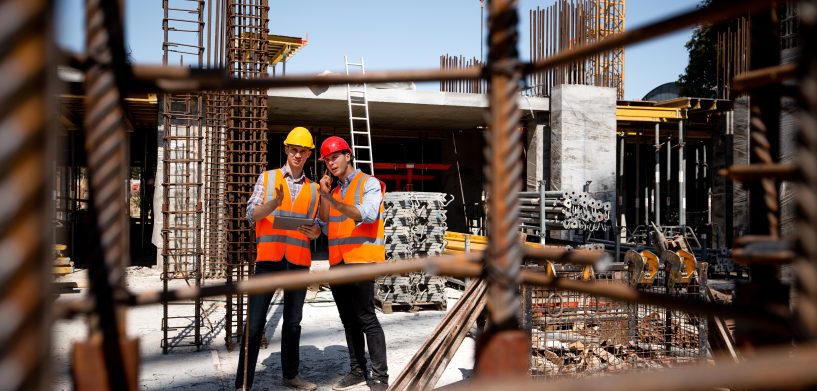At the heart of an on-time construction project is a carefully planned project schedule. Not only does it set appropriate expectations for each step of the project, but it also ensures that all activities are executed efficiently without compromising quality. Learn why a detailed yet achievable construction schedule – powered by digital technologies – is increasingly essential to project success.
What is construction project scheduling?
Scheduling in construction management involves the listing of milestones and activities that must occur to complete the project, including the expected start and finish date for each. Accurately projecting these dates plays a key role in the timely and orderly completion of any major construction project. It also details the sequence and method in which required materials are delivered to the job site and builds in flexibility for contingencies.
Why create a construction project schedule?
The importance of construction planning is perhaps best exemplified by the value of a well-planned construction schedule. According to the Construction Management Association of America, the purpose of the schedule is “to help in ensuring that all activities necessary to complete the work in accordance with the requirements of the contract documents are properly planned, staffed, coordinated and executed in an orderly and expeditious manner.”
Although the importance of planning and scheduling in construction cannot be overstated, it also involves some degree of risk. An experienced project owner generally requires a schedule as a way to measure progress, and substantial deviation from that schedule might later be used as the basis for a legal claim. On the flip side, proper construction scheduling, accompanied by clear communication, instills owner confidence and protects the construction firm.
What are the advantages of scheduling in construction?
When carefully done, construction scheduling brings a host of mutual advantages to the construction firm and the owner. A detailed schedule allows decision-makers to perform oversight tasks including the following:
- Assess feasibility of the required milestones and handover date, helping to manage expectations.
- Determine availability of labor, equipment and materials so informed bidding can begin.
- Preplan the proper sequence of activities to ensure optimal use of resources.
- Provide contractors and subcontractors appropriate lead time to plan their tasks.
- Avoid preventable delays by enabling detailed monitoring of work progress so corrections can be made early.
- Compare planned accomplishments to actual accomplishments to determine liability if significant discrepancies occur.
- Complete the project in the shortest time at the lowest cost possible without sacrificing quality.
How to prepare a construction project schedule
Construction projects are difficult to schedule, even in the best of circumstances. When considering how to schedule construction, remember that the availability of labor, equipment and materials, as well as inclement weather, create a moving target. In spite of this, and in fact because of it, careful construction scheduling is the best defense against long delays. The following sections offer guidelines for how to create a realistic construction project schedule.
Select tools and gather information
The first step in scheduling is to select the appropriate construction scheduling tool – preferably digital – which we will address later. Once tools are selected, gather all available information about the project. Who will the contractors and subcontractors be? Ask them which materials are involved and how long it will take to procure them. Find out how long their respective tasks will take and what their dependencies are. Identify applicable building codes and learn how long you should expect to wait for inspections. All of this information provides context for your schedule.
List and prioritize tasks
Once you have gathered relevant information, you must break the project into tasks. These sequential or overlapping tasks can be combined into milestones, which are markers along the path to project completion. For example, electrical wiring and installing light fixtures might be tasks needed to achieve a milestone of completing all electrical work. You should also make sure to include activities related to the tasks, such as ordering materials and performing inspections. Bar charts and other visual tools simplify the prioritization of interdependent activities and can be very helpful in this part of the process.
Calculate task duration
After tasks are listed and prioritized, it is time to assign each one a start and finish date. Factor in historical information such as task duration during previous projects, likelihood of inclement weather and other impacts. In long-term projects, make sure to schedule in holidays, sick days and other time off that workers may require.
Allocate the work
Allocating work can be tricky with so many moving parts. A cost-conscious project manager must ensure that no teams are over-allocated while others are waiting or moving to other job sites to better manage their own time. Maintain good communications with contractors so expectations are clear to everyone involved.
Review the schedule frequently
Schedule adjustments are expected on any large construction project, so a successful schedule must have flexibility built in. Look over the schedule daily and update it frequently to align with real-world conditions. By monitoring the schedule and making needed adjustments, such as renting more equipment or hiring additional labor, you raise the likelihood of a successful project that comes in on time and within budget.
Why use construction scheduling software?
Research shows that intuitive, digital construction tools can substantially improve the efficiency of the entire planning and scheduling process. With the right software, information-sharing is simple, dependencies are easy to identify and accountability is ensured. By adding a mobile component, stakeholders can access schedule information from any device.
The ideal digital construction scheduling tool allows you to do the following and more:
- Set realistic start and end dates for tasks and milestones. Your degree of success in meeting these targets creates a history that will inform future decisions.
- Access real-time updates from the job site. Situational awareness lets you correct course early if snags like late material shipments, worker absence or inclement weather impact the schedule.
- Manage resources efficiently. Knowing when and where workers, equipment and materials are needed enables optimal resource allocation.
- Improve visibility of the schedule. Access to a detailed construction timeline, complete with dependencies, builds confidence that the project is on target.
TAKE THE PAIN OUT OF SCHEDULING
Xalt’s mobile solutions simply the scheduling of any size construction project with capabilities like these:
- Easy data input and access to schedule information from any device
- Intuitive user interface ideal for beginning to expert users
- Seamless integration with existing construction management software
- Notifications about when and where resources are needed
- Easy reporting on the status of tasks and milestones
- Visual, digital tools that flag dependencies and exceptions
- Historical record of past projects to inform current and future schedules



















